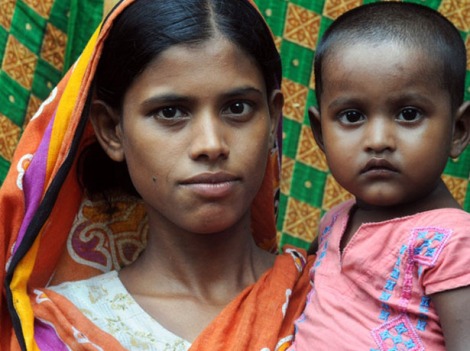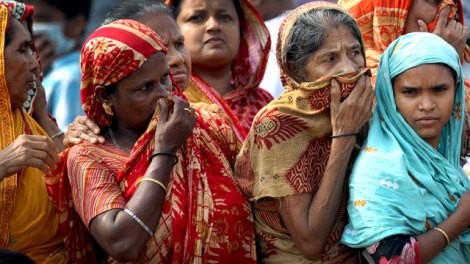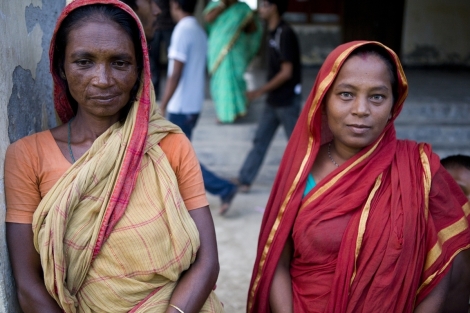“It’s not enough for women to speak out on the issue – for the message to be strong and consistent, women’s voices must be backed up by men’s.”
–Rep. John Conyers, Jr., Michigan
The epidomological spread of gender based violence in Bangladesh is not something to be taken lightly. Over 60% of Bangladeshi women have experienced gender based violence and nearly two-thirds of these victims never seek help.[i] Research suggests that this is due to the patriarchal nature of Bangladeshi society which causes and perpetuates violence. This violence is not without consequences as it adversely affects the physical, mental, reproductive, and maternal health of many local women. To address these health risks caused by poor socio-cultural practices it is imperative that programs systematically include gender based violence prevention programs into the tertiary, secondary, and primary levels of Bangladeshi health care systems.
NATURE AND MAGNITUDE
Violence against women in Bangladesh has become alarmingly prevalent, this includes but is not limited to, physical, sexual, and psychological harm.[ii] 89% of urban women and 86% of rural women report experiencing physical violence more than once. Meanwhile, 37% of urban women and 50% of rural women reported experiencing repeated sexual abuse.
The bigger problem is that two-thirds of women experiencing violence do not tell others or seek help for four reasons:
- First, women believe their husbands or partners have the right to use violence against them.
- Second, services are not readily available or accessible.
- Third, it is perceived these services will not help.
- Fourth, help seeking behaviors will make the situation worse if their husband or partner found out.[iii]
WHO IS BEING AFFECTED
Although violence does not overwhelmingly affect women of a particular socioeconomic group, prevalence is slightly higher among young, poor, rural women. [iv] Of the rural women that experienced violence, 41% were between the ages of 15-19, compared to the 26% who were between the ages of 45-49.
RISK FACTORS
There are many risk factors associated with violence. In urban areas, a history of violence against the woman’s mother, often inflicted by the father, is a very prominent risk factor.[v] Youth also puts a woman more at risk of experiencing gender based violence. Marriages are arranged for Bangladeshi girls in their early teens. Because young brides have a low social status, younger women are more likely than older woman to be abused.[vi]On the other hand, education has an inverse relationship with violence. Higher education helps overshadow the effect of gender roles. For women, six years of education or more significantly reduced the chances of experiencing violence. For men, 11 years of education or more reduce the chances of perpetuating violent behavior.[vii]
CONSEQUENCES
- Violence directly impacts physical health.
It is common for female victims who have experienced gender based violence to report trouble walking and or carrying out daily activities due to excessive pain, memory loss, and nausea.
- Violence affects mental stability.
It makes a woman 3.5-4 times more likely to have suicidal thoughts and six times more likely to attempt suicide on more than one occasion. Suicide is a consequence of particular concern because 37% of deaths of women aged 15-44 are due to suicide and this percentage continues to increase.
- Violence affects family planning and safe sex practices.
Sexual violence limits a woman’s jurisdiction over safe sexual practices that protect from pregnancies and STIs, including HIV.[iii] Violence is not only a risk factor for HIV, but also a consequence of status disclosure. Informed choices of the perpetrator become jeopardized because women are unlikely to disclose their status due to the fear of violence.
- Violence adversely affects maternal health.
Women who experience violence are far more likely to delay seeking prenatal care, delay seeking postnatal care, gain insufficient weight, and bleed during pregnancy. They are also far more likely to acquire vaginal, cervical, and kidney infections.
- Violence adversely affects pregnancy outcomes.
Violence increases the risk of miscarriages, abortions, premature labor, and fetal distress.[vi] Violence also is associated with a four-fold increase in low birth weight. Low birth weight is a leading cause of infant mortality.
STEPS TO BE TAKEN
The alarming prevalence and magnitude of gender based violence against women poses a significant health concern that must be addressed immediately. Programs addressing gender based violence should be systematically included into the tertiary, secondary, and primary levels of Bangladeshi health care systems.[xv]
Tertiary care should utilize facility or community-based screening of women with visible signs of abuse and provide adequate counseling. However, in order to be effective, it is necessary that staff be skilled in abuse counseling that is culturally sensitive.[xvi] Secondary care should utilize the risk factors listed above to identify women likely to experience violence. Preventative measures should be taken to give high-risk women the tools to seek help before assistance is needed. Similar to tertiary care, abuse counseling must be done by skilled, culturally sensitive professionals in order to negate the stigmas that adversely affect health-seeking behaviors.[xvii] Last but not least, primary care should aim to change social attitudes that perpetuate violence in order to prevent abuse from occurring at all. First, universal screening should take place to signal that violence is unacceptable. Second, community-based family-life education courses that include strategies for marital communication and conflict revolution should be provided to all women. Third, rehabilitation and reintegration programs should specifically target males who are at risk of or do perpetrate violence; and finally, punitive measures must be taken against males who continue to perpetuate this harmful behavior[xviii].
 ICMHD is actively involved in projects around the globe aimed at improving the health and welfare of women. Help fund ICMHD‘s research so that we can better identify and treat those most at risk.
ICMHD is actively involved in projects around the globe aimed at improving the health and welfare of women. Help fund ICMHD‘s research so that we can better identify and treat those most at risk.




“Its really nice. This page contain a huge amount of material. I think it would be more and more effective for all.
Personally I like this job. Thank you for sharing.mens health
Very well written comprehensive blog on ending gender based violence. Me, having medical background I could gather practical ideas how best to introduce remedial actions to support victims, survivors at primary, secondary and tertiary health care of Bangladesh Government. Thank you indeed!